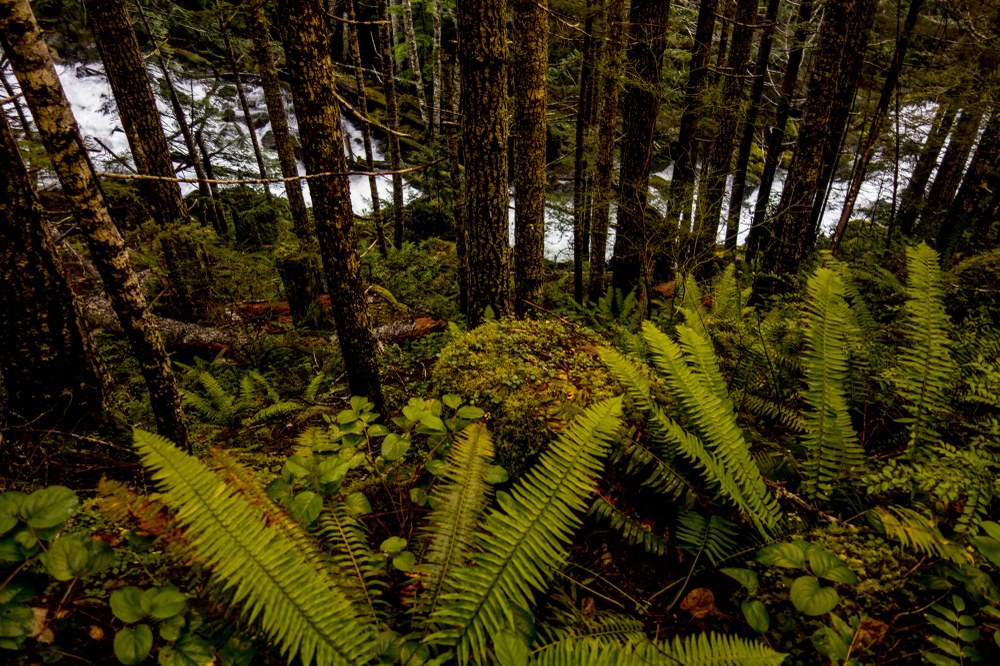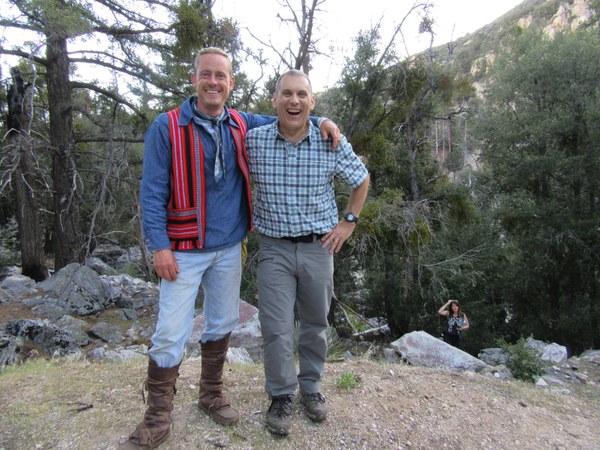
One of the biggest highlights of my career as an outdoors writer so far was being flown to Los Angeles last spring for a TV shoot on the Weather Channel’s SOS How to Survive. The program is hosted by Creek Stewart, a nationally renowned survival instructor and author. Each episode of SOS How to Survive spotlights true life stories involving folks who have dealt with life-threatening situations (often in the wilderness) interjected with segments on survival tips and skills.
My role was to walk through the forest and talk with Creek about edible berries. It was a survival skill segment for an episode about 71-year-old Sajean Geer. In July of 2017 Geer had gotten lost high in the Olympic Mountains and was able to survive six nights without food and gear. The story had a happy ending because Geer was knowledgeable enough to build an emergency shelter, find water, and forage on insects and several native plants — wild currants being one of them.
I was contacted last winter by the producer and writer of the show because they were looking for an expert on the Olympic Mountains. I was interviewed at length on aspects of the Olympics — weather, terrain, wildlife, and flora. I know the Olympics fairly well and I knew Geer’s story. I was familiar with the area in the mountains where she was lost. I explained what type of plants and animals she possibly could have encountered there.
Come spring the producer decided that he wanted me on the program as one of the experts they periodically bring onto the show. My shoot would be on edible berries. I was beyond thrilled to be on the program — my first time on a national TV show. It was not only an exciting experience, but it opened up a whole new world to me. Being on the set and hanging out with the cast and crew gave me insight into the world of television. I got some behind the scenes looks. Since we shot in southern California’s San Gabriel Mountains, we had to have a black currant flown down from an Oregon nursery and secure all of the permits from the Forest Service to plant it (then remove it) for our shoot in a forest of sugar pines and live oaks (not quite a fir, cedar, and hemlock Olympic forest!).
My shoot (including travel time to and fro) took three days for what ultimately came down to a one minute and 27 seconds segment on the show. But the whole process from initial contact by the producer to doing the shoot was transformative for me. No, I haven’t gone Hollywood (although I would love to do something like this again for sure)! It was transformative in that it really had me questioning, assessing, and analyzing just how much of an outdoors expert I really am. Yeah, I have decades of outdoors experience and tens of thousands of miles on the trail under my belt. I have taken MOFA, assisted in a rescue while I was a guide in the Pyrenees, and am always prepared with the proper gear. I am pretty knowledgeable on reading the land and weather, planning, nutrition, and physical fitness. I’m all about the Ten Essentials. But how much do I know about truly surviving on my own in the wilderness if some unforeseeable event occurred?
While my role on the TV show was small, I spent hours reviewing what I knew — and what I thought I knew. I spent hours researching, coming to the realization that I don’t know as much as I thought I knew. Or in this case, things I should know! Could I survive in the woods without ample food and supplies for a night — a week — longer?
In one episode of Creek’s first TV program, he talks about the three biggest mistakes people make before they even set foot in the wild. Two are ones I know well and I do my best to avoid making them: not leaving an itinerary with anyone on where you’re going, and not maintaining (taking care of) your body. If no one knows where you are and disaster strikes, you may not get the help you need in a timely manner (or at all) — and if your body fails, you’re going to have a much harder time getting out of a situation.
The third mistake people make, according to Creek, is relying too much on gear. Gear fails and folks put too much faith in it that it will protect them and get them out of trouble. Instead Creek emphasizes that your biggest survival skill is knowledge. It weighs nothing, and the more you know the more control and options you have to survive. With the proper knowledge you can assess your situation and use the things around you to help you survive. And this is the point that resonated with me the most. Sure, I have an adequate knowledge of a handful of plants that I can eat and ones to avoid. I know how to build a fire and shelter and find water. But through self-refection I realized there is so much I don’t know. And those gaps in my knowledge can mean the difference between life and death.
Upon my initial interviews I began buying books on edible plants and then voraciously read about the plethora of flora in the Northwest that can sustain you. Through the years I have often scoffed at outdoor recreationists that don’t even know what I consider basic knowledge — like the difference between a fir and a pine. I have always maintained that you get so much more out of nature when you fully appreciate all of its complexities and facets. Plant and animal identification has always been a priority of mine when recreating outdoors. Knowing what I am seeing and understanding its role in the beauty around me enhances my time outdoors. And now knowing (and learning more about) what I can eat out there enhances my chances that I can survive if something goes terribly awry on one of my hikes.
 The author (right) with TV host Creek Stewart. Photo courtesy of Craig Romano.
The author (right) with TV host Creek Stewart. Photo courtesy of Craig Romano.
It doesn’t take much for things to go badly. It can happen to any of us at any time, from first-time hiker to skilled, crusty outdoorsperson. Knowledge is power — and in this case, knowing what is edible in the wilderness may very well save your life.
Creek’s shows have shined a lot of light on tens of thousands of viewers each week. He teaches skills and hacks that almost anyone can do if need be. For me, being on the show for one short segment was a big learning opportunity. I learned not to be content with what I know. There is so much more to know. Knowing too much won’t hurt me. But not knowing enough may mean the difference between life and death. There is more than picking the best food, tent, stove, etc. for performance in the outdoors. You need to devote time learning what you can do if you find yourself in the middle of the wilderness without your performance food, tent, stove, etc. I don’t know about you, but I have lots more to learn before my next hike!
Craig Romano is an award-winning author who has written more than 20 books. His latest release, Urban Trails Eastside (Mountaineers Books) highlights the best trails for walking, running, and hiking in Bellevue, Redmond, the Snoqualmie Valley, and the Issaquah Alps. Some of his other titles includes; Urban Trails Seattle, 100 Classic Hikes Washington, and Day Hiking Olympic Peninsula (2nd edition).
This article originally appeared in our Fall 2019 issue of Mountaineer Magazine. To view the original article in magazine form and read more stories from our publication, click here.
 Craig Romano
Craig Romano